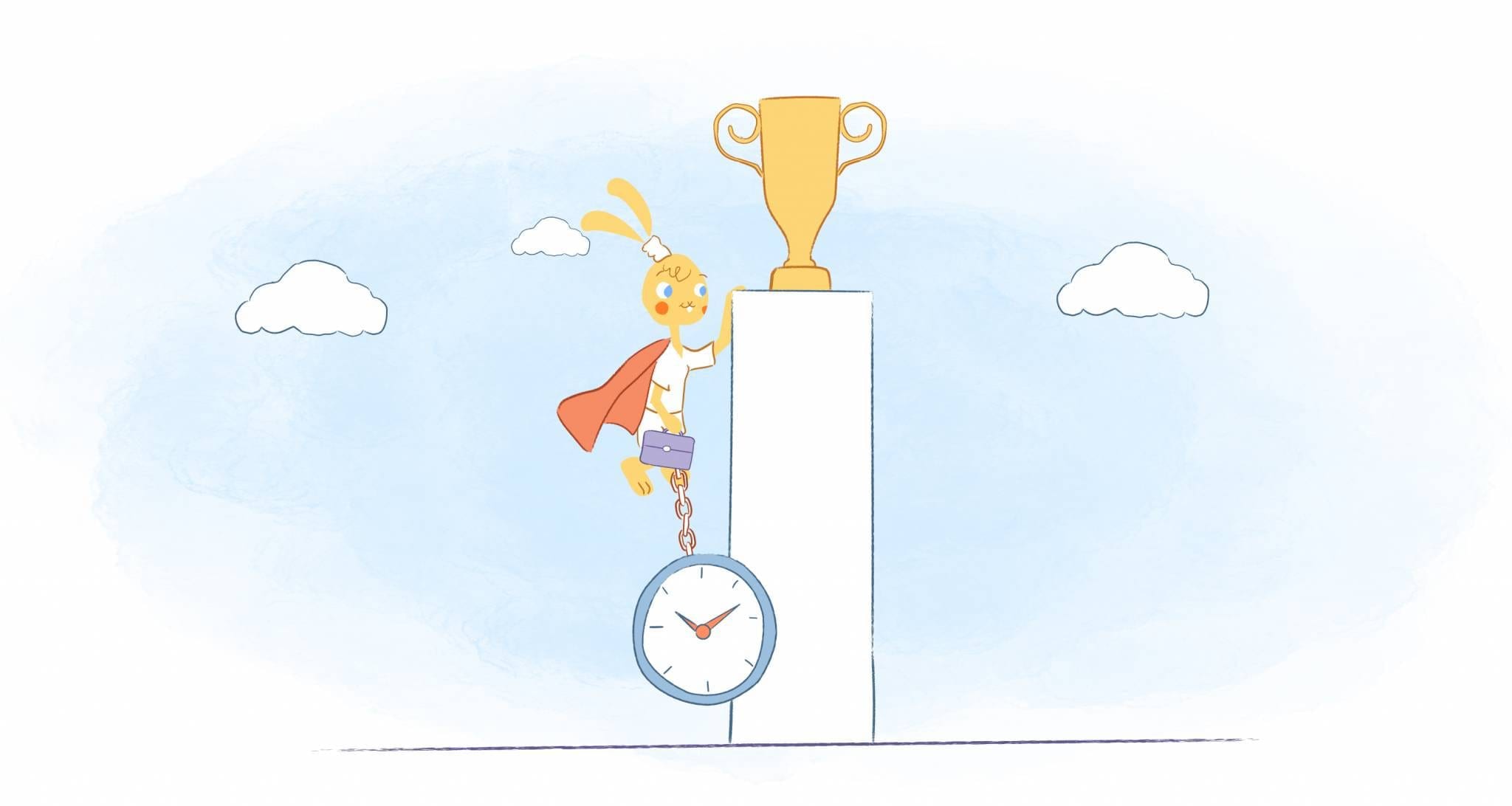

The other morning I woke up with a not-so-productive mentality. I’d even go as to say that my mantra was, “I’m not doing squat.”
That’s usually not my bag. On this particular morning, however, I just felt lethargic. Was it because I was in a slump or just being trapped in a laziness loop?
After checking in with myself, I concluded that I was not in a rut. I was simply lackadaisical. But, why?
One explanation? It’s evolution, baby.
Scientists have found that the brain prefers to expend as little energy as possible. We can thank our ancestors for this because doing less actually improved their chances of survival.
“Conserving energy has been essential for humans’ survival, as it allowed us to be more efficient in searching for food and shelter, competing for sexual partners, and avoiding predators,” explained Matthieu Boisgontier, a postdoctoral researcher in UBC’s brain-behavior lab at the department of physical therapy, and senior author of the study. “The failure of public policies to counteract the pandemic of physical inactivity may be due to brain processes that have been developed and reinforced across evolution.”
But, that’s not the sole reason. Laziness can mask fear or be a sign of depression. It may also be a precursor to a medical condition. Maybe it’s because you don’t get instant gratification from a specific task. Or, there’s a lack of purpose.
Regardless of the reason, laziness can be a real problem. After all, it can cause you to miss deadlines, fall behind on projects, or even neglect your health. Thankfully, there are ways that you can break out of the laziness loop.
Be like Neil Armstrong.
Be that I mean taking one small step. You know. Just like Armstrong did when he became the first human to walk on the moon.
“Big goals can be daunting, but smaller goals can feel easier to manage,” says psychologist and counselor Victoria Shaw. “If you’re having trouble finding the motivation to head to the gym, start with a walk around the block. If you are dreaming of writing a book, start by writing a few paragraphs a day.”
Need some strategies to get you started? I suggest trying:
- The 5-second rule. “If you have an impulse to act on a goal, you must physically move within 5 seconds or your brain will kill the idea,” explains Mel Robbins, who popularized this technique. For instance, if you’re postponing to an email or Slack message response, countdown 5-4-3-2-1 and then send a reply.
- The 2-minute rule. Made famous by David Allen, this concept is pretty straightforward. “If it takes less than two minutes, then do it now.” So, instead of stating that you’ll read before bed every night, start with “I’ll read one page before bed each night.
- Set an alarm for 10-minutes. As psychologist and procrastination expert Timothy A. Pychl explained to Psychology Today, here you would “make a deal with yourself.” Even if you aren’t thrilled about doing the task, you still do it for 10 minutes. “Once you’re involved, it’s easier to stay with a task.”
Rethink your long-term goals.
“Long-term goals are great to have,” notes Sarah Sharkey for Calendar. “However, it can be difficult to get these great, big lengthy goals done — unless you divide them into smaller tasks.
You can achieve this by creating a timeframe. For example, you have two months to wrap-up a project. To create a sense of urgency, give yourself a deadline of one month.
You also need to be realistic. “Think carefully about your goals and your abilities,” adds Sharkey. “Try not to set goals that are impossible to achieve.”
“At the same time, do not limit yourself,” she says. “Continue to dream big, just set up realistic goals for yourself.”
From here, establish checkpoints to keep track of your progress. And, for each stepping stone, create smaller tasks.
Learn how to value your work.
It’s damn near impossible to find motivation when you don’t love what you do. If you find yourself in this state of mind, then it’s time to finally take pride in your work. Personally, I take a step back and reflect on my purpose and values. But, you may also want to try:
- Putting your signature, initials, watermarks, or anything else that identifies your work.
- Build a good reputation, like always being on-time, so that others rave about you.
- Figure out how your contributions play a role in the big picture.
- Find ways to continually learn and grow.
- Make the most of your time, like spending downtime reading or exercising.
You may also want to write in a gratitude journal the benefits or what you do. And, I’d also list the parts you enjoy doing.
Switch up your environment.
Just because working from home has become more commonplace doesn’t mean that everyone is cut out for it. Why? Usually, it’s because they lack self-discipline or get easily distracted by household chores.
If this is the case, then you might want to consider working elsewhere. I know when I’ve been dragging, I head to my office or favorite coffee shop. Being surrounded by like-minded individuals inspire me to get working. Research backs this claim up to as it’s been found that mental effort exertion is contagious.
Design a reward system.
“Just as you see a dog do a trick for a treat, humans are actually pretty similar,” says therapist and counselor Lauren Cook. “We are motivated by rewards.” The key, however, is to select “what would be a good incentive for you (like taking a hot bath or having a scoop of ice cream).” And, you also need to “hold yourself accountable to not earn this reward until you’ve completed the assigned task at hand.”
Create behavior chains to develop specific new habits.
James Clear wrote all about in this his book “Atomic Habits.” Specifically, he describes this as habit stacking. “Rather than pairing your new habit with a particular time and location, you pair it with a current habit,” he explains.
The habit stacking formula is After/Before [CURRENT HABIT], I will [NEW HABIT]. An example of this would be, “After I take off my work shoes, I will immediately change into my workout clothes.”
Find a partner in crime.
A better way to put this, find an accountability partner. Ideally, this should be someone who has a proven track record of motivating and pushing you when you don’t feel like it. You know, that friend who has a knack for getting you off the couch and to the gym. You want to turn to people like that when need to kick yourself into high gear.
Play to your strengths.
Whenever you’re combating laziness, take a time out and think about what you’re good at. You may even factor in the things that you enjoy doing. After that, see where you can apply those to something that you dread or find challenging.
Research shows that when you do this you’re able to increase positive feelings, engagement, and productivity. And, as previously stated, once you get moving, it’s much harder to stop.
Practice self-compassion.
“I found in my research that the biggest reason people aren’t more self-compassionate is that they are afraid they’ll become self-indulgent,” said Dr. Kristin Neff, an associate professor of human development at the University of Texas at Austin. “They believe self-criticism is what keeps them in line. Most people have gotten it wrong because our culture says being hard on yourself is the way to be.”
The thing is, being too hard on yourself creates a cycle of self-criticism and negativity. As a result, they’ll be less motivated to change. A better idea is to stop being so hard on yourself.
Don’t feel guilty if you can’t buckle down and work. Maybe you’re working against your ultradian rhythms, tired from a poor night of sleep, or burned out. Instead, embrace your laziness by taking a power nap, meditating, or focusing on a less trying task. It may not be what you planned. But, you’re still using your time wisely.
However, if there is not a good reason for your slump — or laziness — sincerely — don’t beat yourself up, just get a grip and get going. You’ve worked like crazy before and you can choose to do so now.











Howie Jones
My name is Howie and I'm a Customer Success Manager at Calendar. I like to ensure our customers get the best experience using our product. If you have questions email me howie at calendar.com